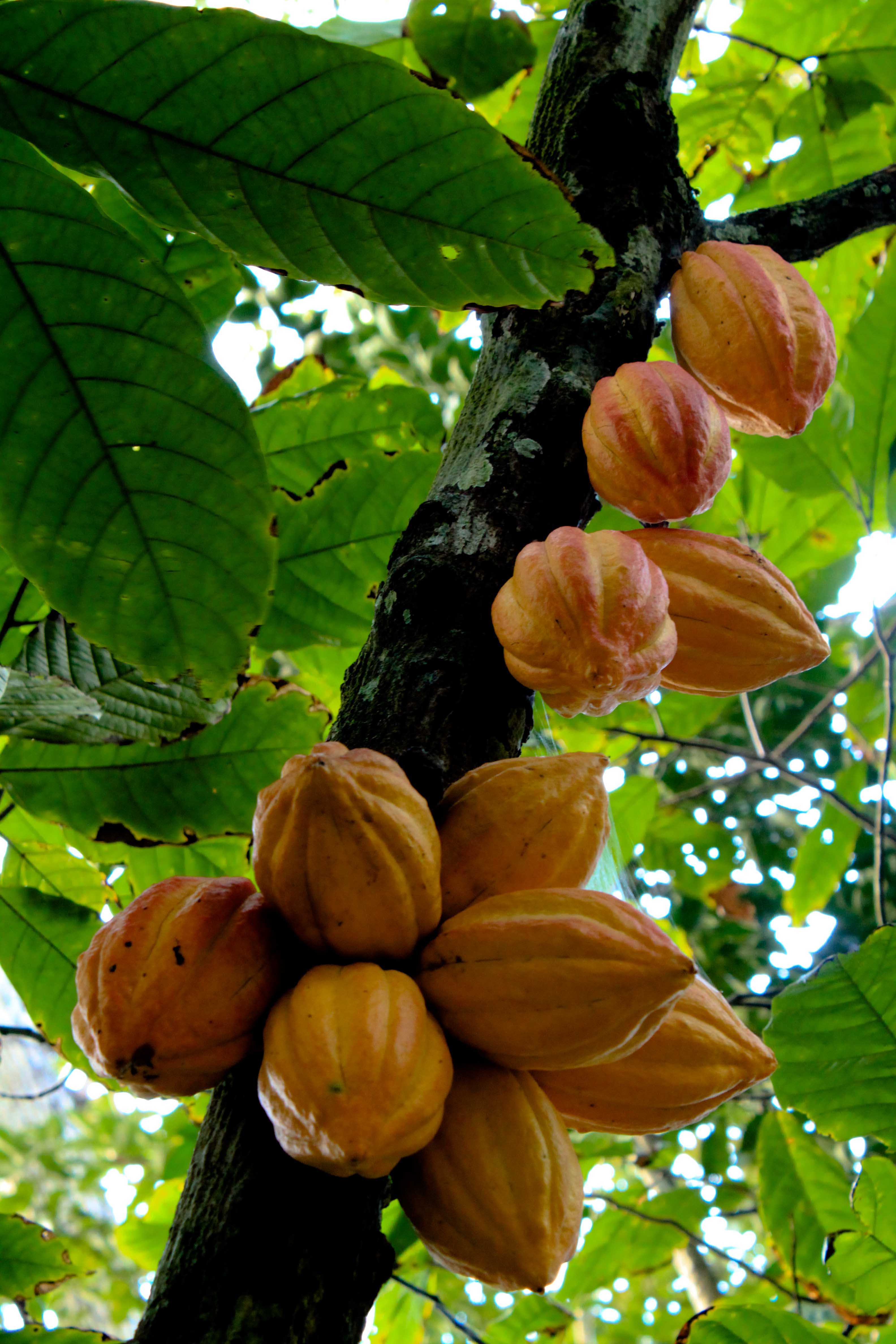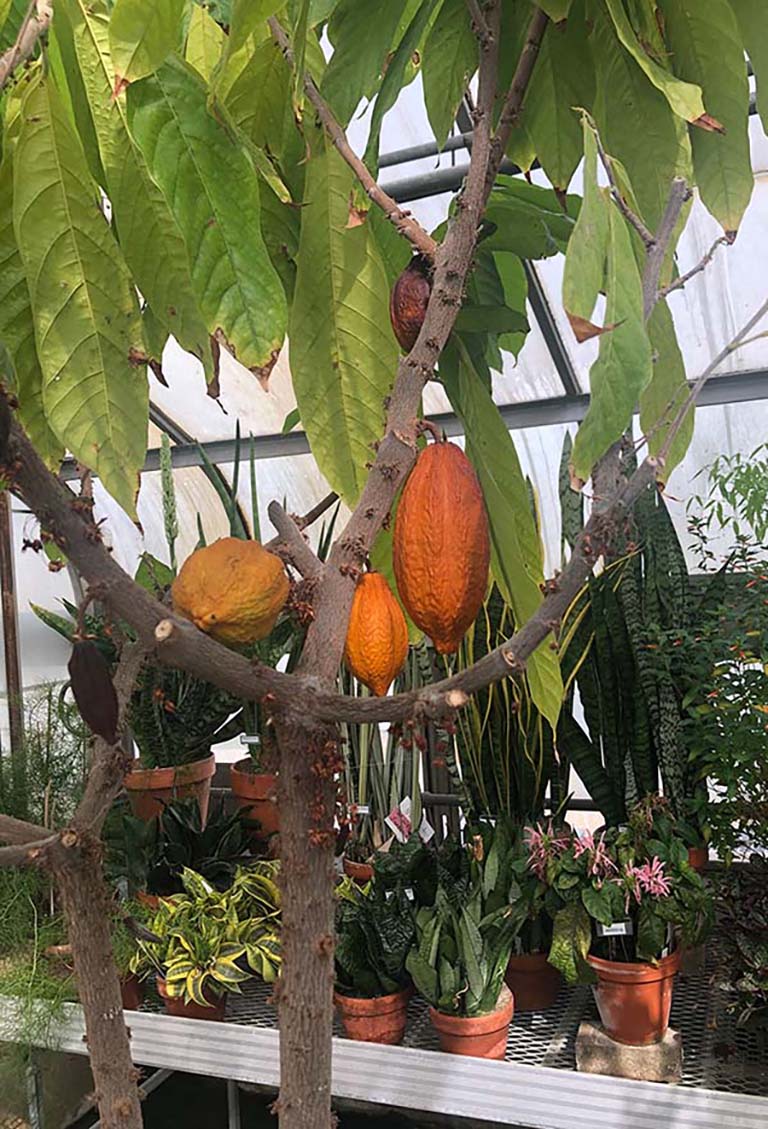Theobroma Cacao: The Tree of Life
Theobroma cacao, a tropical evergreen tree, is the source of cocoa beans, the primary ingredient in chocolate. This remarkable plant has been cultivated for centuries, with its history dating back to the ancient civilizations of Mesoamerica. Today, it remains a vital agricultural commodity, enjoyed by people worldwide for its rich flavor, nutritional value, and cultural significance.
Botanical Characteristics
Theobroma cacao is a member of the Malvaceae family, which also includes cotton, hibiscus, and okra. It is a small to medium-sized tree, typically reaching heights of 15-20 meters (49-66 feet). The tree has a dense, spreading crown, and its bark is rough and furrowed.

The leaves of the cacao tree are large, simple, and alternate, with a glossy dark green color. The flowers are small, white, and clustered in groups on the trunk and older branches. This phenomenon, known as caulifloria, is a unique characteristic of cacao trees.
The fruits of the cacao tree, known as pods, are large, oblong, and ribbed. They are typically 15-30 centimeters (6-12 inches) long and weigh between 200 and 500 grams (7-18 ounces). The color of the pods varies depending on the cacao variety, but they are often yellow, orange, or red.
Inside the pods, cocoa beans are embedded in a pulpy white substance called mucilage. The beans are small, flat, and oval-shaped, with a bitter, slightly sweet taste. They are covered in a thin, purple-brown husk.
Cultivation and Harvesting

Theobroma cacao is a tropical plant that thrives in humid, warm climates with abundant rainfall. It is typically cultivated in plantations located near the equator, in regions such as West Africa, Central and South America, and Southeast Asia.
Cacao trees are propagated from seeds, which are planted in nurseries and then transplanted to the field when they are about 12-18 months old. The trees are spaced approximately 3-4 meters apart to allow for adequate sunlight and air circulation.
Cacao trees begin to bear fruit after 3-4 years of growth, and they continue to produce for 20-25 years. The pods are harvested by hand, typically using a machete or a long pole.
Processing and Fermentation

After harvesting, the cocoa pods are opened, and the beans and pulp are removed. The beans are then fermented in large heaps or containers for several days. During fermentation, the pulp is converted into sugars and acids, which develop the characteristic flavor and aroma of cocoa.
The fermented beans are then dried in the sun or in drying sheds. Drying reduces the moisture content of the beans, making them easier to store and transport.
The Chemistry of Chocolate
Theobroma cacao beans are rich in a variety of chemical compounds, including:
Theobromine: A stimulant similar to caffeine, but with a milder effect.
These compounds, along with the sugars, fats, and proteins found in cocoa beans, contribute to the unique flavor and nutritional value of chocolate.
The History of Chocolate
The history of chocolate dates back to the ancient civilizations of Mesoamerica, particularly the Olmec and Maya. These cultures believed that chocolate was a gift from the gods and used it in religious ceremonies and as a beverage.
The Aztecs later adopted chocolate from the Maya and incorporated it into their own culture. They drank chocolate as a bitter beverage, often flavored with spices such as chili peppers, vanilla, and cinnamon.
In the 16th century, Spanish conquistadors introduced chocolate to Europe. Initially, it was considered a luxury item and was only consumed by the wealthy. However, as the popularity of chocolate grew, it became more accessible to the general public.
Over the centuries, chocolate has evolved into a beloved treat enjoyed by people around the world. Today, it is available in a wide variety of forms, including bars, candies, drinks, and desserts.
The Cultural Significance of Chocolate
Chocolate has deep cultural significance in many societies. It is often associated with luxury, pleasure, and indulgence. In some cultures, chocolate is given as a gift to express love, affection, and appreciation.
Chocolate also plays a role in various celebrations and holidays, such as Valentine’s Day, Easter, and Christmas. It is often used in desserts, cakes, and other treats that are enjoyed on special occasions.
The Health Benefits of Chocolate
In recent years, research has shown that moderate consumption of dark chocolate can have various health benefits. These benefits include:
Improved heart health: Dark chocolate contains flavanols, which can help lower blood pressure and improve blood flow.
It is important to note that the health benefits of chocolate are primarily associated with dark chocolate, which contains higher levels of flavanols than milk chocolate or white chocolate. Excessive consumption of chocolate, however, can lead to weight gain and other health problems.
The Future of Chocolate
The future of chocolate is bright. As consumers become more aware of the health benefits of dark chocolate, demand for this product is expected to continue to grow. Additionally, new and innovative chocolate products are being developed, such as chocolate-infused beverages, snacks, and cosmetics.
However, the future of chocolate also faces challenges. Climate change, deforestation, and child labor are among the issues that threaten the sustainability of the cacao industry. Efforts are being made to address these challenges and ensure that chocolate production remains ethical and environmentally responsible.
In conclusion, Theobroma cacao is a remarkable plant that has been cultivated for centuries. It is the source of cocoa beans, which are used to make chocolate, a beloved treat enjoyed by people worldwide. Chocolate has a rich history and cultural significance, and it is also known for its nutritional value and potential health benefits. As the demand for chocolate continues to grow, it is important to ensure that the cacao industry is sustainable and ethical.

:strip_icc()/Star-Jasmine-Bb09HQPpasXBPjzYMW55cV-cae2b5707aa74a3ba328959ad0357284.jpg?w=200&resize=200,112&ssl=1)




